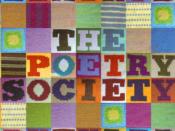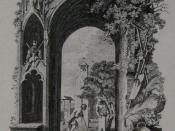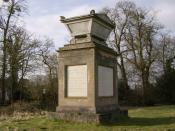Thomas Gray is generally and rightly regarded as a transitional figure in 18th century poetry, providing a bridge between the poetic sensibility of his own generation and the Romantic revolution of the future. His work shows the relation between the poetry of the new age and that of the 18th century. Several aspects of his poetry show the trends in the direction of romanticism, but he could never really escape form the spirit of the age in which he lived.
Gray's "Elegy" is pervaded by an atmosphere of melancholy, which lends to the poem a romantic character. The poem, though possessing romantic qualities, bears also the 18th century neo-classical influences. Here he works within the rigid limitations of a four line iambic pentameter stanza rhymed abab, constructing stately and memorable poetic locutions while remaining strictly conventional in his rhythms, rhymes and diction. The very regularity of his heavy iambic beats help to create a sense of the timeless, changeless routine of country life.
In style the "Elegy" is traditional and neo-classical. But in ideas and attitudes Gray breaks new ground. He celebrates the worth and humanity of the common man in a way that foreshadows the Romantics like Burns and Wordsworth. He ruminates with romantic melancholy over "the short and simple annals of the poor". Moreover, in the later part of the poem where the focus shifts from the nameless dead to the poet himself, we get a strong subjective and introspective emphasis that is startlingly new.
A large part of the charm of the "Elegy" comes from the poet's personal, sensitive approach to his subject. He lingers in the churchyard, noting the signs of approaching nightfall until the atmosphere of twilight musing is established, after which his reflections upon life and death have a tone of sad...


